背景
- hologres业务高峰期,大量来自CEM的任务容易造成OOM
- CEM无法识别sql复杂程度,执行时长不可控
- CEM没有sql调度中心,无法对sql查询任务进行动态管理
样本集
原始来源
来着于hologres的历史查询记录可以获得可用样本
- 只获取查询成功的SELECT语句
- 只获取开头为WITH的复杂查询,多为分析sql的临时表sql结构
- 只获取来自测试环境和生产环境的sql
SELECT
COUNT(1) as count
FROM hologres.hg_query_log
WHERE
command_tag='SELECT'
AND status = 'SUCCESS'
AND datname='ry_cdm_hl'
AND client_addr in ('xx.xx.xx.xx','xx.xx.xx.xx')
AND query like 'WITH%'
特征工程
由历史记录可以获得具体执行的sql以及执行时长,这本身就是样本对(sql–>duration)。由于执行时长(duration)是个数值,样本构造仅需要对sql语句进行处理
Explain
从explain <sql> 获取执行计划,解析执行计划顺序构造成二叉树,二叉树节点为执行计划节点的扫描函数。
执行计划是从下到上进行计算sql的,这里是hologres单节点执行sql的情况,构建出的二叉树是个极不平衡树(只会有左节点)。有些复杂sql可以构建出左右子树存在的平衡二叉树
Sort (cost=0.00..31806.28 rows=926859 width=30)
Sort Key: (CASE WHEN ("_$title" IS NULL) THEN 'NULL'::text ELSE "_$title" END), (FINAL pg_catalog.count((PARTIAL pg_catalog.count(1)))) DESC
-> Gather (cost=0.00..555.17 rows=926859 width=30)
-> Final HashAggregate (cost=0.00..487.63 rows=926859 width=30)
Group Key: (CASE WHEN ("_$title" IS NULL) THEN 'NULL'::text ELSE "_$title" END), "_$event"
-> Redistribution (cost=0.00..379.01 rows=5088503 width=30)
Hash Key: (CASE WHEN ("_$title" IS NULL) THEN 'NULL'::text ELSE "_$title" END), "_$event"
-> Local Gather (cost=0.00..355.12 rows=5088503 width=30)
-> Decode (cost=0.00..354.60 rows=5088503 width=30)
-> Partial HashAggregate (cost=0.00..354.50 rows=5088503 width=30)
Group Key: (CASE WHEN ("_$title" IS NULL) THEN 'NULL'::text ELSE "_$title" END), "_$event"
-> Filter (cost=0.00..205.43 rows=27936128 width=22)
Filter: ((CASE WHEN ("_$title" IS NULL) THEN 'NULL'::text ELSE "_$title" END) <> ''::text)
-> Project (cost=0.00..159.47 rows=27936128 width=22)
-> Seq Scan on Partitioned Table dwd_log_cem_event_enet (cost=0.00..127.74 rows=35277948 width=27)
Partitions selected: 7 out of 161
Filter: ((ds >= 20231115) AND (ds <= 20231121))
-> Partial HashAggregate (cost=0.00..354.50 rows=5088503 width=30)
Group Key: (CASE WHEN ("_$title" IS NULL) THEN 'NULL'::text ELSE "_$title" END), "_$event"
-> Filter (cost=0.00..205.43 rows=27936128 width=22)
Filter: ((CASE WHEN ("_$title" IS NULL) THEN 'NULL'::text ELSE "_$title" END) <> ''::text)
-> Project (cost=0.00..159.47 rows=27936128 width=22)
-> Seq Scan on Partitioned Table dwd_log_cem_event_enet (cost=0.00..127.74 rows=35277948 width=27)
Partitions selected: 7 out of 161
Filter: ((ds >= 20231115) AND (ds <= 20231121))
Optimizer: HQO version 2.0.0
Optimizer: HQO version 2.0.0
构造Tensor
一颗二叉树代表了sql的执行计划,也间接代表了sql的复杂程度(由执行计划的顺序和扫描行数共同决定)
对于二叉树–>Tensor,这边主要是由这棵树的前中后序遍历结果进行构造,因为前中后序遍历决定当且仅当的一棵树
普通特征矩阵
这边构造了两种Tensor,一种是普通特征矩阵[batch_size,500,3]
- 维度1(500):前中后序遍历的最大长度,目前所有sql的前中后序遍历加起来长度也就00出头,500的容量完全够用(遍历长度不足500,补0.0)
- 维度2(3):二叉树节点保存的rows、width以及算子名称。目前样本中sql执行计划出现过的算子最多20多个,直接映射成0-20+的数值即可(编码)
import re
from queue import LifoQueue
from sql_time_pred.holo.entity.history import History
from sql_time_pred.holo.entity.operator_node import OperatorNode
def refine_plan(plan):
return [p for p in plan if "cost=" in p and "rows=" in p and "width=" in p]
def head_space_count(text):
pattern = r'^\s+'
# 使用正则表达式找到匹配项
match = re.search(pattern, text)
# 如果找到匹配项,则计算空格的数量
if match:
count_spaces = len(match.group())
else:
count_spaces = 0
return count_spaces
def parse_plan(duration: int, plan: list[str]):
# 去除无用信息
plan = refine_plan(plan)
root_line = plan[0]
root = OperatorNode(root_line)
root_space_count = head_space_count(root_line)
root.level = root_space_count
root.duration = duration
stack = LifoQueue()
indent_stack = LifoQueue()
stack.put(root)
indent_stack.put(root_space_count)
for i in range(1, len(plan)):
line = plan[i]
space_count = head_space_count(line)
node = OperatorNode(line)
node.level = space_count
node.duration = duration
if space_count > indent_stack.queue[-1]:
stack.queue[-1].left_node = node
stack.put(node)
indent_stack.put(space_count)
else:
while space_count <= indent_stack.queue[-1]:
stack.get()
indent_stack.get()
stack.queue[-1].right_node = node
stack.put(node)
indent_stack.put(space_count)
return root
def build_nodes(histories: list[History]) -> list[OperatorNode]:
plans = [(his.duration, his.plan) for his in histories]
return [parse_plan(duration, plan) for duration, plan in plans]
def validate_parse_nodes(histories: list[History]):
nodes = build_nodes(histories)
assert len(nodes) == len(histories)
for i in range(len(histories)):
plan0 = []
print_node(nodes[i], plan0)
plan = histories[i].plan
plan = refine_plan(plan)
print(plan == plan0)
def print_node(root: OperatorNode, plan: list[str]):
if root == None:
return
plan.append(root.message)
print_node(root.left_node, plan)
print_node(root.right_node, plan)
Image(主要用于后续的CNN方案)
前中后序遍历也仅仅是用节点顺序表达一棵树,是否可以构造出更为直观保留树结构和节点信息的Tensor?
对一棵树的遍历映射成二维特征矩阵,前中后序遍历可以获得一个Image[batch_size,3,500,500]
- 维度1(3):前中后序遍历
- 维度2、3(500):容纳树的遍历最多用500*500的Tensor保存,同上,也是够用的
100, 0, 0, 0, 0, 0
200, 0, 200, 0, 0, 0
300, 0, 300, 0, 300, 0
文本编码
除去计算机语言特性,sql语句本身就是文本,完全可以用NLP的方式进行编码
import random
import re
import torch
from nltk.tokenize import word_tokenize
# 示例文本
text = '''
with temp_event_table as(
select
case
when cast(event_cem._$title as text) is null then 'NULL'
else cast(event_cem._$title as text)
end as group_cem,
event_cem.ds as ds_cem,
event_cem._$event as _$event_cem,
event_cem._$time as _$time_cem,
event_cem._$one_id as _$one_id_cem
from
ry_cdm.test_dwd_log_cem_event_enet event_cem
where
(event_cem.ds >= 20231111
and event_cem.ds <= 20231124)
and ((event_cem._$event = '$AppStart')
or (event_cem._$event = '$AppEnd')) ),
temp_bool_table as(
select
temp_event_table.group_cem,
temp_event_table._$one_id_cem,
DATE(TO_TIMESTAMP(temp_event_table._$time_cem / 1000)) as date_cem,
case
when temp_event_table._$time_cem >= 1699632000000
and temp_event_table._$time_cem <= 1700236800000
and (temp_event_table._$event_cem = '$AppStart') then true
else false
end as start_cem,
case
when temp_event_table._$time_cem >= 1699718400000
and temp_event_table._$time_cem <= 1700841600000
and (temp_event_table._$event_cem = '$AppEnd') then true
else false
end as end_cem
from
temp_event_table ),
temp_retention_table as(
select
temp_bool_table.group_cem,
temp_bool_table._$one_id_cem,
RANGE_RETENTION_COUNT(temp_bool_table.start_cem,
temp_bool_table.end_cem,
temp_bool_table.date_cem,
array[1,
2,
3,
4,
5,
6,
7],
'day',
'normal') as retained_detail_cem
from
temp_bool_table
group by
temp_bool_table.group_cem,
temp_bool_table._$one_id_cem ),
temp_merge_table as(
select
temp_retention_table.group_cem,
temp_retention_table._$one_id_cem,
REGEXP_SPLIT_TO_ARRAY(unnest(RANGE_RETENTION_SUM(temp_retention_table.retained_detail_cem)), ',')as retained_cem
from
temp_retention_table
group by
temp_retention_table.group_cem,
temp_retention_table._$one_id_cem ),
temp_split_table as(
select
temp_merge_table.group_cem,
temp_merge_table._$one_id_cem,
temp_merge_table.retained_cem[1] as first_day_cem,
temp_merge_table.retained_cem[2] as init_people_cem,
temp_merge_table.retained_cem[3] as retention_1_cem,
temp_merge_table.retained_cem[4] as retention_2_cem,
temp_merge_table.retained_cem[5] as retention_3_cem,
temp_merge_table.retained_cem[6] as retention_4_cem,
temp_merge_table.retained_cem[7] as retention_5_cem,
temp_merge_table.retained_cem[8] as retention_6_cem,
temp_merge_table.retained_cem[9] as retention_7_cem,
temp_merge_table.retained_cem[10] as retention_8_cem,
temp_merge_table.retained_cem[11] as retention_9_cem,
temp_merge_table.retained_cem[12] as retention_10_cem,
temp_merge_table.retained_cem[13] as retention_11_cem,
temp_merge_table.retained_cem[14] as retention_12_cem,
temp_merge_table.retained_cem[15] as retention_13_cem,
temp_merge_table.retained_cem[16] as retention_14_cem,
temp_merge_table.retained_cem[17] as retention_15_cem
from
temp_merge_table )
select
distinct temp_split_table._$one_id_cem as _$one_id,
account_cem._$login_id,
account_cem.account_id,
account_cem.account_tenant_id,
account_cem.account_company_id,
account_cem.account_name,
account_cem.account_phone_decrypt,
account_cem.is_real_name_account,
account_cem.account_identy_type,
account_cem.account_l1_zone,
account_cem.account_l2_zone,
account_cem.account_nation,
account_cem.account_provnce,
account_cem.account_city,
account_cem.account_first_visit_app_time,
account_cem.account_first_visit_macc_time,
account_cem.account_last_visit_app_time,
account_cem.account_last_visit_macc_time,
account_cem.use_duratn,
account_cem.use_cnt,
account_cem.account_type,
account_cem.account_registr_date,
account_cem.account_active_date,
account_cem.account_repurce_date,
account_cem.account_loyal_date,
account_cem.account_valid_proj_cnt,
account_cem.account_rui_proj_cnt,
account_cem.account_yi_proj_cnt,
account_cem.account_home_proj_cnt,
account_cem.account_device_cnt,
account_cem.account_rui_device_cnt,
account_cem.account_yi_device_cnt,
account_cem.account_home_device_cnt,
account_cem.account_proj_sum_price,
account_cem.account_ry_proj_sum_price,
account_cem.account_first_rui_proj_online_date,
account_cem.account_first_yi_proj_online_date,
account_cem.account_certify_enginer_type,
account_cem.account_company_name,
account_cem.account_company_role_type,
account_cem.company_owner_account_name,
account_cem.company_class,
account_cem.company_employe_cnt,
account_cem.company_certify_enginer_cnt,
account_cem.company_proj_cnt,
account_cem.company_scheme_cnt,
account_cem.company_device_cnt,
account_cem.case_total_cnt,
account_cem.case_cnt_rct_1m,
account_cem.case_cnt_rct_6m,
account_cem.case_cnt_rct_1y,
account_cem._$carrier,
account_cem._$manufacturer,
account_cem._$model,
account_cem._$browser,
account_cem._$browser_version,
account_cem._$os,
account_cem._$os_version,
account_cem._$screen_height,
account_cem._$screen_width
from
ry_ads.ads_log_cem_user_account_label_wt_enet account_cem
right join temp_split_table on
temp_split_table._$one_id_cem = account_cem._$one_id
where
temp_split_table.init_people_cem::INTEGER >= 1
and temp_split_table.group_cem = ''
and temp_split_table.first_day_cem = '20231111'
limit 15 offset 0
'''
device = torch.device("cuda" if torch.cuda.is_available() else "cpu")
text = re.sub(r'\s+', ' ', text)
# 分词
tokens = word_tokenize(text)
# 构建词汇表
vocab = sorted(list(set(tokens)))
# 随机打乱词汇表顺序
seed = 213422
random.seed(seed)
random.shuffle(vocab)
word_to_index = {word: i for i, word in enumerate(vocab)}
# 将文本转换为索引序列
indexed_tokens = [word_to_index[word] for word in tokens]
# 将索引序列转换为张量
tensor = torch.tensor(indexed_tokens)
tensor = tensor.to(device)
# 打印结果
print(tensor)
但这种编码方案十分依赖足量样本,以保证样本的泛化足够
举例:
这两句sql文本上就差了个数字2,文本编码出来的Tensor十分类似,但是两者执行复杂度天差地别。样本很少时,使用文本编码,会造成严重的样本倾斜
-- 简单sql,查询7天数据
SELECT * FROM ry_cdm.dwd_log_cem_event_enet
WHERE ds >= 20231115 and event_cem.ds <= 20231121
-- 复杂sql,查询一年数据
SELECT * FROM ry_cdm.dwd_log_cem_event_enet
WHERE ds >= 20221115 and event_cem.ds <= 20231121
样本倾斜
目前样本中的执行时长大部分集中在1s左右,这就造成大量样本对的输出基本就是1秒多,训练出来的模型由于样本倾斜,也只会输出1s左右的预测。
用log函数对其进行离散化
self.duration = [math.log(x + math.e, math.e) for x in self.duration]
离散化前的执行时长分布
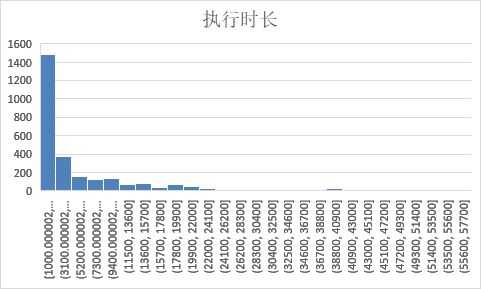
离散化后的执行时长分布

标准化
主要针对sql转换成的Tensor进行标准化,执行计划中行数大的可达几百亿,小的只有个位数,标准化可以避免大数值影响梯度下降
def norm(self, tensor):
tensor = torch.log(tensor + 1) # 添加1以避免log(0)
# 标准化(零均值,单位方差)
mean = tensor.mean()
std = tensor.std(dim=0) + 0.0001
tensor = (tensor - mean) / std
return mean, std, tensor
模型
特征矩阵欧式距离
原理
对现有样本的sql都构造成Image,即三维特征矩阵。任意的sql都可以构造Image,和样本的Image进行相似度比对。矩阵相似度计算方式有很多,这里用最小的欧氏距离获取样本中最相似的Image,进而获得对应样本的执行时长。
优点
- 模型不需要训练,不需要额外的GPU资源
- 易于实现,执行效率高
##¥ 缺点 - 精度差,受限于样本过少,即使匹配到最相似的样本,其欧氏距离仍旧很大,获得的执行时长并不准
CNN
原理
对于Image样本进行CNN分类任务。全连接层直接预测时长
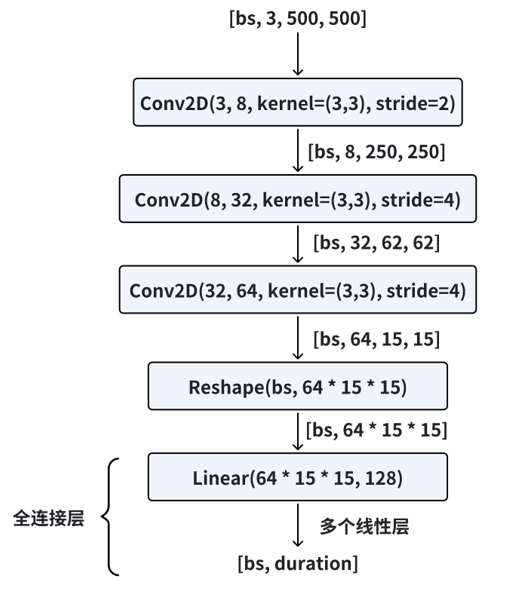
优点
- 实现简单,CNN会帮你处理好数据中的结构信息
缺点
- Image中存在大量0数据,数据过于稀疏,梯度下降困难
- 样本过少,预测时长不够准确
LSTM+ResNet3/5
这里的LSTM用了8层,输出的维度由原来3扩充为了32
import torch
from torch import nn
from torch.nn import functional
from sql_time_pred.dataset.sample_builder import max_seq_length, vector_size
use_res_net = True
class ResBlock(nn.Module):
def __init__(self, ic, oc, class_num):
super(ResBlock, self).__init__()
self.ic = ic
self.oc = oc
self.class_num = class_num
self.linear1 = nn.Linear(ic, oc)
self.bn1 = nn.BatchNorm1d(class_num)
self.linear2 = nn.Linear(oc, oc)
self.bn2 = nn.BatchNorm1d(class_num)
# 短接回路
self.extra = nn.Sequential()
if oc != ic:
self.extra = nn.Sequential(
nn.Linear(ic, oc),
nn.BatchNorm1d(class_num)
)
def forward(self, x):
# 计算残差块的卷积输出
out = functional.relu(self.bn1(self.linear1(x)))
out = self.bn2(self.linear2(out))
# 计算短接的输出并相加
out = self.extra(x) + out
out = functional.relu(out)
return out
class LSTM(nn.Module):
def __init__(self, class_num: int,
hidden_size: int,
num_layers: int,
res_layer_num: int):
super(LSTM, self).__init__()
self.hidden_size = hidden_size
self.class_num = class_num
# [batchSize,max_seq_length,vectorSize] --> [batchSize,max_seq_length,hidden_size]
self.lstm = nn.LSTM(
input_size=vector_size,
hidden_size=self.hidden_size, # hidden_layer的数目,即输出的维度
num_layers=num_layers,
batch_first=True, # 输入数据的维度一般是(batch, squence, vector),该属性表征batch是否放在第一个维度
)
self.seq = nn.Sequential(
nn.Linear(int(max_seq_length * self.hidden_size / self.class_num), 1024), nn.ReLU(),
nn.Linear(1024, 512), nn.ReLU(),
nn.Linear(512, 128), nn.ReLU(),
nn.Linear(128, 1), nn.ReLU(), )
assert res_layer_num == 3 or res_layer_num == 5
channels = [512, 256, 128, 64, 32][::int(3 - (res_layer_num - 1) / 2)]
channels = [int(max_seq_length * self.hidden_size / self.class_num)] + channels
self.res_seq = nn.Sequential()
for i in range(len(channels) - 1):
self.res_seq.add_module("res_net_" + str(i), ResBlock(channels[i], channels[i + 1], class_num))
self.res_seq.add_module("relu_" + str(i), nn.ReLU(), )
self.fc = nn.Sequential(
nn.Linear(32, 16), nn.ReLU(),
nn.Linear(16, 1), nn.ReLU(),
)
def forward(self, x):
output, h_c = self.lstm(x)
output = torch.reshape(output, (-1, self.class_num, int(output.shape[1] * output.shape[2] / self.class_num)))
if use_res_net:
output = self.res_seq(output)
else:
output = self.seq(output)
output = self.fc(output)
# [1,20,1]
output = torch.reshape(output, (-1, self.class_num))
# [1,20]
return output
if __name__ == '__main__':
l = [512, 256, 128, 64, 32][:1]
device = torch.device("cuda" if torch.cuda.is_available() else "cpu")
randn = torch.randn(1, 500, 3).to(device)
net = LSTM(20).to(device)
net1 = net(randn)
print()
优点
- sql执行计划可以视作时序信息,本质上代表了hologres的运行顺序,由LSTM提取特征比较合适
- 精度最高,当然模型参数量也最多
- 全连接层由多层线性层转为了多个ResNet残差块
- 由原先的预测执行时长转为分类任务,在分类数比较多的时候,同样可以预测细粒度的时长
- 多中分类数量可以训练多个模型,做集成学习
缺点
- 系统复杂度提升,模型代码量较多
- 提升模型维护门槛
模型测试
50分类
以训练5000轮的结果为例,训练参数如下
训练参数
[
{
"cls_weight":false,
"res_layer_num":5,
"hidden_size":32,
"num_layers":5,
"batch_size": 256,
"epochs": 5000,
"class_num": 50,
"learn_ratio": 0.001
}
]
训练基准

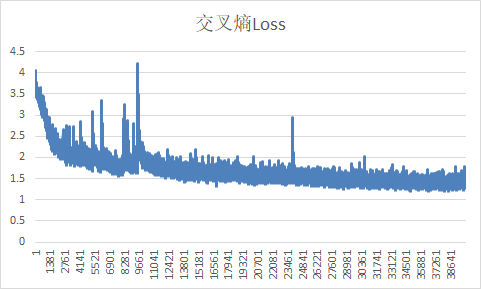
测试基准
在0-10s内准确度在80%以上

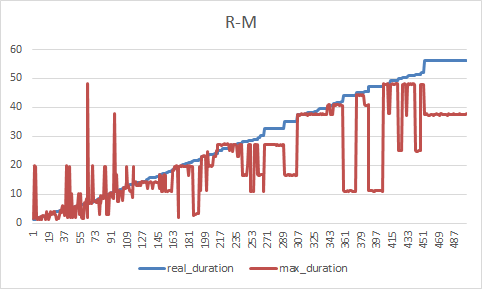
- R:真实的执行时长
- M:模型预测时长
样本离散化失效了?
并不是,交叉熵损失设置权重,仅仅是帮助训练时梯度下降的更快,尽量让模型学习稀疏部分的执行时长。
离散化也是在帮助梯度下降,样本倾斜的事实并没有改变,只是把集中在1-10s的样本离散在更大的数学空间上了。
样本质量决定了模型的上限,模型最好的性能也只能体现在了1-10s区间的预测了。

80分类
以训练1000轮的结果为例,训练参数如下
训练参数
[
{
"cls_weight":false,
"res_layer_num":5,
"hidden_size":32,
"num_layers":5,
"batch_size": 256,
"epochs": 1000,
"class_num": 80,
"learn_ratio": 0.001
}
]
训练基准


测试基准
在0-10s内准确度在70%以上


- R:真实的执行时长
- M:模型预测时长
集成学习
集成40、50、62、80分类的四个模型进行基准测试
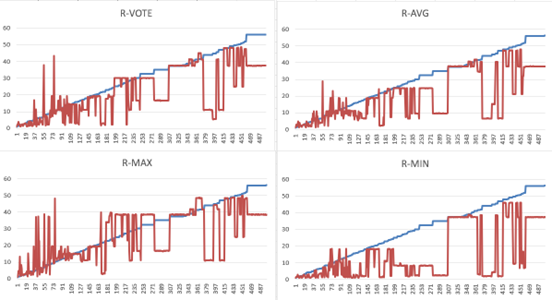

改进了CEM什么?
队列系统,sql好好排队,合理打向数仓
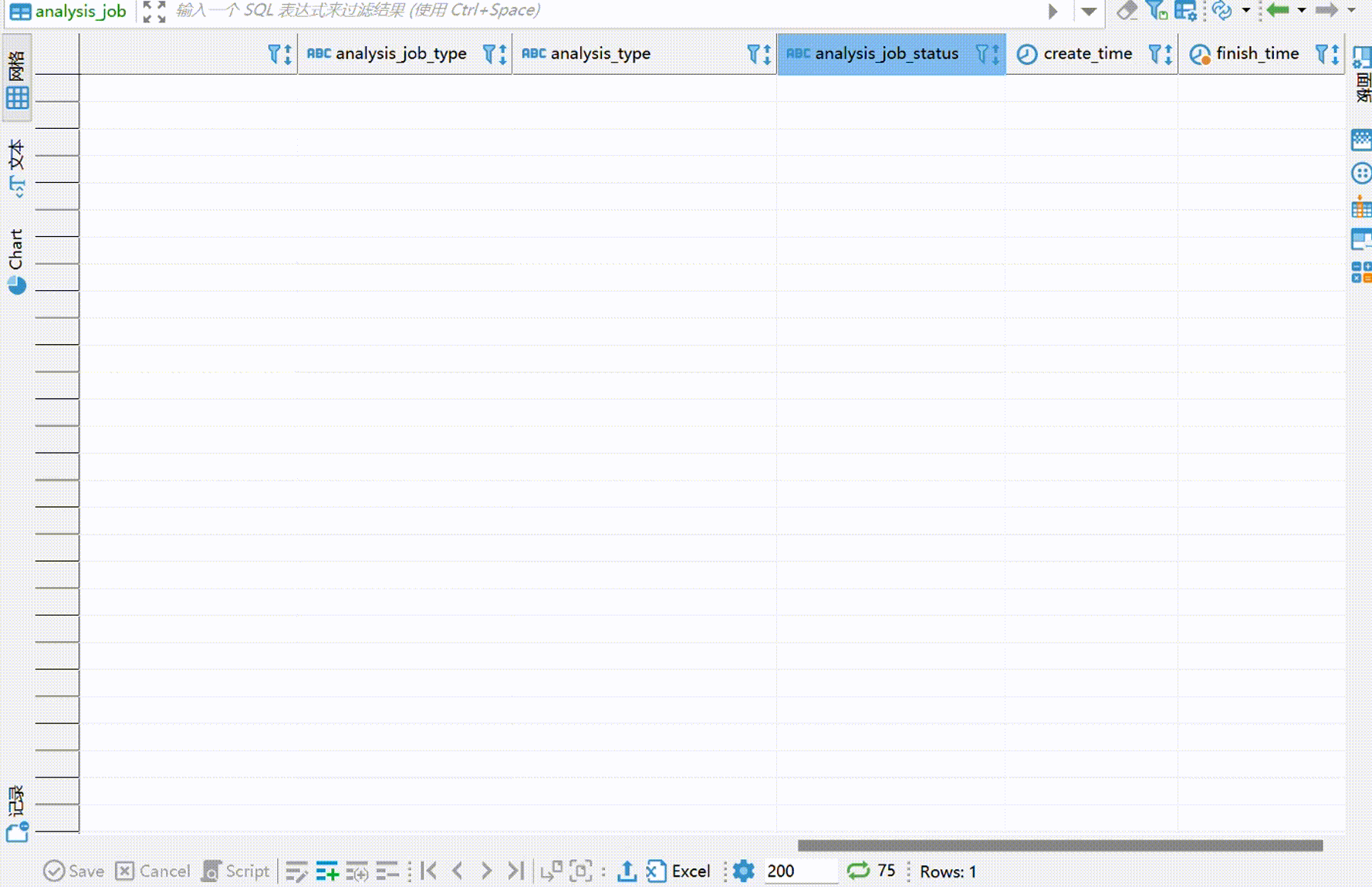
现存问题
- 样本不足
- holo即将升配



评论区